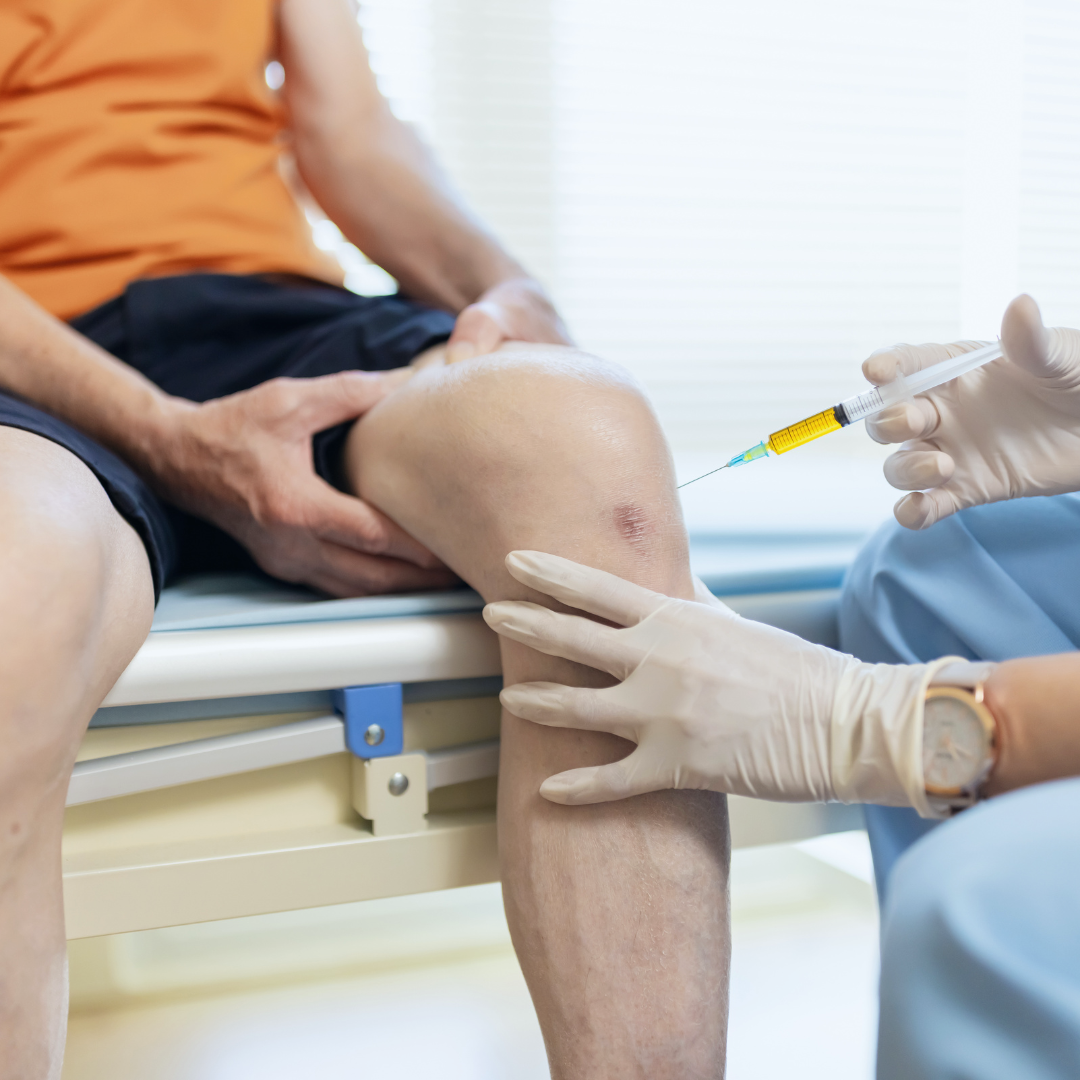Understanding Knee Ligament Tears
How PRP Therapy Works for Knee Ligament Tears
Platelet-Rich Plasma (PRP) therapy is an advanced regenerative treatment that utilizes the body’s natural healing properties. PRP is derived from a patient’s own blood, processed to concentrate platelets, and then injected into the injured knee ligament. Platelets contain growth factors that stimulate tissue repair, reduce inflammation, and promote faster healing of damaged ligaments.
The Science Behind PRP Injections
PRP injections work by enhancing the body’s biological healing response. When injected into the knee, the concentrated platelets release bioactive proteins that accelerate tissue regeneration. These growth factors help in rebuilding ligament fibers, increasing collagen production, and improving overall knee strength. Unlike traditional treatments, PRP aims to heal the root cause of the injury rather than just alleviating symptoms.
Benefits of PRP Injections for Knee Ligament Tears
PRP therapy offers several advantages for individuals recovering from knee ligament injuries. The procedure is minimally invasive, meaning it does not require surgery or prolonged downtime. It helps in reducing pain and inflammation naturally, supporting the body’s self-repair mechanisms. Additionally, PRP injections can improve knee function, enhance mobility, and prevent recurring injuries by strengthening the ligament structure.
Ideal Candidates for PRP Therapy
Individuals experiencing knee instability, pain, and difficulty in movement due to ligament injuries may benefit from PRP injections. Athletes, active individuals, and those looking for non-surgical treatment options often consider PRP therapy for faster recovery. However, a thorough evaluation by a medical professional is necessary to determine whether PRP is the right solution based on the severity of the ligament tear.
The PRP Injection Procedure
PRP therapy follows a simple yet effective procedure. A small amount of blood is drawn from the patient, which is then placed in a centrifuge to separate and concentrate the platelets. Once prepared, the PRP solution is injected into the knee ligament using ultrasound guidance for precision. The entire process is completed within a short session, allowing patients to resume light activities soon after.
Recovery and Post-Treatment Care
Following PRP injections, patients may experience mild swelling or discomfort in the knee, which typically subsides within a few days. Rest and controlled movement are recommended to support healing. Gradual physiotherapy may be introduced to enhance ligament strength and flexibility. Patients are advised to follow activity modifications and rehabilitation exercises to achieve optimal recovery results.
Long-Term Outcomes of PRP for Knee Ligament Tears
PRP injections have shown promising long-term benefits for knee ligament recovery. With enhanced collagen production and tissue regeneration, patients often experience improved knee stability and reduced chances of re-injury. The effectiveness of PRP depends on individual response, injury severity, and adherence to post-treatment rehabilitation plans.
Comparing PRP with Other Knee Ligament Treatments
Unlike conventional treatments such as pain-relieving medications or cortisone injections, PRP focuses on healing the ligament naturally. While surgery remains an option for severe ligament tears, PRP offers a non-surgical alternative that supports biological repair. Patients who prefer regenerative therapy over invasive procedures often opt for PRP as a reliable solution.
Frequency of PRP Injections for Knee Healing
The number of PRP sessions required varies based on the extent of the ligament injury and individual healing capacity. Some individuals experience improvement after a single injection, while others may need multiple sessions to achieve the best results. A healthcare provider will assess progress and recommend additional treatments if necessary.
PRP Therapy for Sports-Related Knee Injuries
Athletes frequently suffer from knee ligament injuries due to intense physical activities. PRP therapy has gained popularity among sports professionals for its potential to accelerate recovery and enhance performance. By promoting tissue repair, PRP helps athletes regain knee strength and return to their training routines safely.
Role of PRP in Preventing Knee Joint Degeneration
Untreated ligament injuries can lead to long-term complications, including joint degeneration and chronic instability. PRP therapy helps in preserving knee joint health by supporting tissue regeneration and reducing inflammatory damage. Early intervention with PRP can minimize the risk of further joint deterioration and maintain long-term mobility.
Customizing PRP Treatment for Individual Needs
Every knee ligament injury is unique, requiring a tailored approach to treatment. PRP therapy can be customized based on the severity of the tear, patient age, activity level, and overall knee health. Personalized treatment plans ensure that patients receive the most effective regenerative care for their specific condition.
Combining PRP with Rehabilitation Techniques
PRP injections work best when combined with proper rehabilitation techniques. Physiotherapy, strength training, and controlled movements play a crucial role in enhancing the healing effects of PRP. Patients are encouraged to follow guided rehabilitation plans to maximize their recovery potential and restore full knee functionality.
Future Advancements in PRP Therapy
Research in regenerative medicine continues to advance PRP therapy for knee ligament healing. Ongoing studies explore ways to optimize platelet concentration, improve injection techniques, and enhance treatment outcomes. With advancements in medical technology, PRP therapy is expected to become even more effective in promoting knee ligament repair.
Conclusion
PRP injections offer a promising solution for knee ligament tears by utilizing the body’s natural healing mechanisms. With its ability to regenerate tissue, reduce pain, and enhance knee function, PRP therapy stands as a reliable alternative to surgical interventions. Individuals seeking a non-invasive approach to ligament healing can benefit from PRP under the guidance of a medical professional. Proper rehabilitation and post-treatment care further contribute to successful recovery, ensuring long-term knee health.
FAQs
How soon can I expect results after PRP injections for knee ligament tears?
Results vary from person to person, but many patients notice improvement within a few weeks. Full ligament healing may take a few months, depending on the severity of the tear and adherence to rehabilitation exercises.
Are PRP injections painful?
PRP injections may cause mild discomfort during the procedure, but the pain is usually minimal. Local anesthesia is often used to reduce any discomfort, and post-treatment soreness subsides within a few days.
Can PRP therapy completely heal a torn knee ligament?
PRP therapy promotes natural tissue repair, but the effectiveness depends on the extent of the ligament tear. Mild to moderate tears respond well to PRP, while severe cases may require additional treatment approaches.
Is there any downtime after receiving PRP injections?
Patients can resume light activities soon after PRP therapy. However, high-impact movements and strenuous exercises should be avoided for a few weeks to allow proper ligament healing.
Can PRP therapy prevent future knee ligament injuries?
PRP helps in strengthening the ligament and improving knee stability, reducing the risk of future injuries. However, maintaining proper joint care, stretching, and strengthening exercises is essential for long-term knee health.


